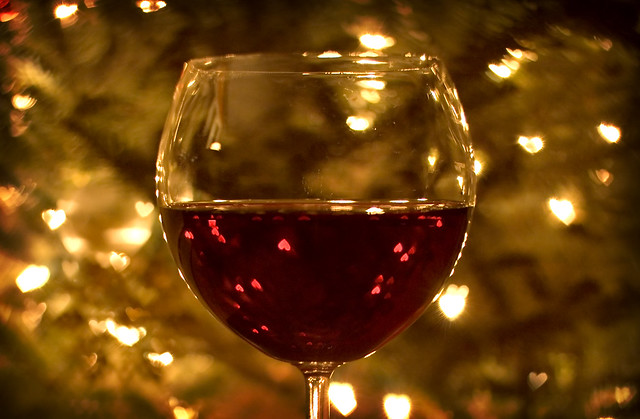Answers to the Age-Old Question: What Makes a "Good" Wine List?
by certified Sommelier Elizabeth Schneider
As wine becomes more popular, it seems like every restaurant touts its unique, boutique wine list.
I’ve got to be honest — I have no idea what that means.
What I do know is that more often than not, nothing is exclusive about these lists. Except for the very top echelon, I find that restaurants frequently get good deals from distributors and buy things from them based on price. Wine buyers often would rather peddle big brands than take a risk on adding some cool stuff that their servers may need to know about and "hand sell" you on (which is what we want because it expands our repertoire of wine). This is hardly "boutique" or "unique."
And although wine is a subjective topic — what you like and what I like are totally based on our individual taste preferences and palates — I’d argue that there are certain guidelines for what constitutes a "good" wine list for most everyone.
The key to "goodness" is selection. When I say selection, I don’t mean that the list should be 20 or 40 pages long — although many a wine snob would disagree, I’d say a wine book is NOT a good wine list because it is too big for people to manage. What I mean is that there is variety in every way. To that end, here are 6 guidelines to what makes a good restaurant wine list:
- The list must have wines from the Old World (Europe) and the New World (everywhere else that makes wine). Lists of all California wines rob you of the opportunity to taste some of the best food and wine pairings on earth. Traditionally, European wines are more subtle and meant to be consumed with food. They can transform a meal. Although California wines can be great with food, they are often fruitier and higher in alcohol so they highjack the flavors of the food and all you taste is the wine. You at least need the option of drinking French, Italian, Spanish, and German (and you should exercise that option). No Europe = bad list.
- Speaking of food, the wines on the list better pair with the food in the restaurant. Does that mean that a Chinese food restaurant should only offer Riesling and Gewurztraminer (great with Chinese, BTW)? No. But it does mean that the restaurant probably shouldn’t offer high alcohol Zinfandel which will set your mouth on fire if you order anything that has spice with it. Restaurants often pick wines in a vacuum, without considering the dishes they’d recommend the wine to accompany. You can figure out if this is the case really quickly by asking your server for a pairing suggestion. If they’ve got no clue, most likely no thought was given to the issue and certainly no training on wine was provided to help the guests. Not a great sign.
- To reiterate – if the list looks like a lineup on the grocery store shelf, with wines you’d find at Publix — no good. I’ve already hit on this above. Enough said.
- The list should present a variety of still white and red wines, rosé, sparkling, and dessert wine. You should be able to drink your way through the meal and pair it with whatever kind of wine you like best. If any of these are missing, you can’t do that. And yes, even though dessert wine is not overly popular, it should be offered (and in my opinion, you should try it with dessert because its awesome!).
- The list shouldn’t be static. If the wine list doesn’t change from time to time (at least 2 times a year) then no one’s home in the wine department. Wine lists should be dynamic and change with the menu selections. If it’s the same every time, that’s boring and lazy on the part of the restaurant.
- Finally, the thing that’s on most of our minds today — PRICE. There has to be a variety of price points to suit a variety of budgets and occasions. This, of course, is relative to the price of the food, but there should be a broad range to suit most everyone that frequents the restaurant and there shouldn’t just be bad, throw away brands at the low end. There are great values in all price points and the list should have an excellent quality to price ratio across the board.
So there you have it. Hopefully this answers some of your questions about what makes a good list. Happy eating…and drinking!
About the Author
 Elizabeth Schneider is a certified sommelier (wino-experty-thingy-majigger) and wine educator. Through Wine For Normal People, Schneider offers up wine reviews, tasting tips, and all sorts of wine-centric goodies. She also produces one of the most popular wine podcasts anywhere (found here and on iTunes) and offers her services in the form of tastings and consultations. She also blogs, so be sure to check that out.
Elizabeth Schneider is a certified sommelier (wino-experty-thingy-majigger) and wine educator. Through Wine For Normal People, Schneider offers up wine reviews, tasting tips, and all sorts of wine-centric goodies. She also produces one of the most popular wine podcasts anywhere (found here and on iTunes) and offers her services in the form of tastings and consultations. She also blogs, so be sure to check that out.
Elizabeth is also Certified Specialist of Wine, MBA who has years of experience working in the California wine industry. Her approach to wine is down-to-earth, pithy, and honest rather than haughty and snotty. Connect with her through the Wine For Normal People facebook page, on Twitter @normalwine, or through her blog winefornormalpeople.blogspot.com.


